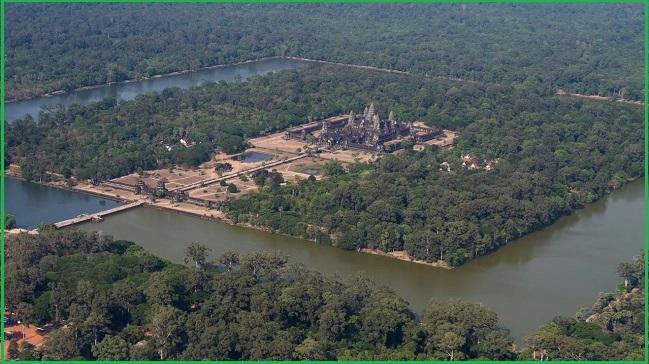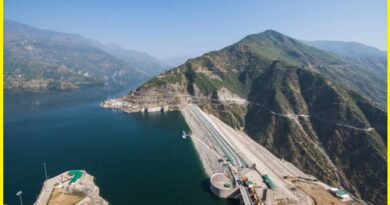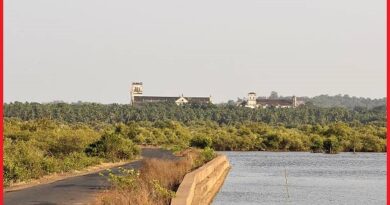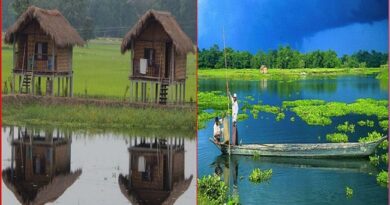Angkor Wat Cambodia-The most iconic temple in the World
Angkor Wat Cambodia
Angkor Wat a UNESCO world heritage site is located in Siem Reap, the northern province of Cambodia. Angkor is one of the important archaeological sites and tourist destinations in South-East Asia. it Stretches over 400 km2, an area including forest. This Hindu temple was dedicated to the god Vishnu for the Khmer Empire, it was gradually transformed into a Buddhist temple towards the end of the 12th century. Angkor wat was built by the Khmer King Suryavarman II in the early 12th century. It has become a symbol of Cambodia, appearing on its national flag, and it is the country’s main attraction for visitors. Angkor wat Archaeological Park contains the magnificent remains of the capitals of the Khmer Empire, from the 9th to the 15th century. They include the famous Temple of Angkor Wat at Angkor Thom and the Bayon Temple with its countless sculptural decorations.
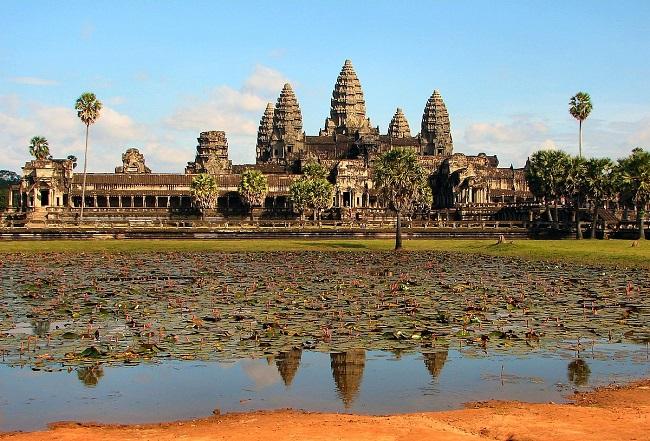
Angkor wat consists of a number of temples, hydraulic structures (basins, dykes, reservoirs, canals), communication routes, impressive monuments, ancient urban plans, and large water reservoirs. the site is a unique concentration of temples such as Angkor Wat, the Bayon, Preah Khan, and Ta Prohm, an excellent example of Khmer architecture. Angkor is therefore a major site for cultural, religious, and symbolic values, as well as containing high architectural and archaeological significance. The park is inhabited, by the ancestors who are dating back to the Angkor period and are scattered throughout the park. The population practices agriculture and specifically depend upon rice cultivation.
Feature of the Ankor wat temple
The Angkor complex represents the entire range of Khmer art from the 9th to the 14th centuries and includes a number of masterpieces such as Angkor Wat, the Bayon, and Banteay Srei. The Khmer Empire of the 9th-14th centuries encompassed much of Southeast Asia and played an important role in the political and cultural development of the region.
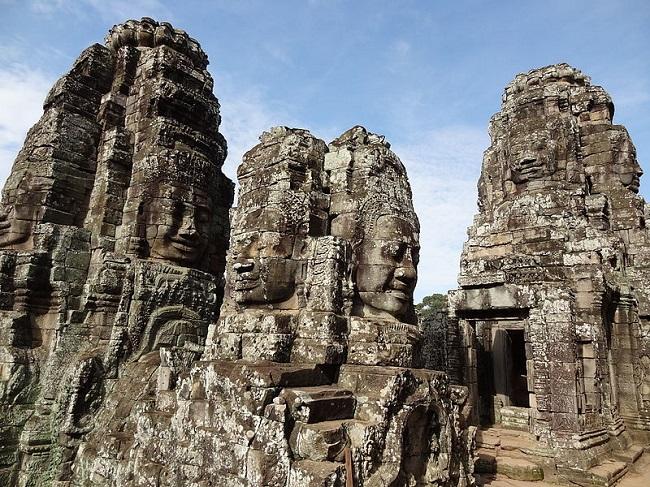
Khmer architecture evolved largely from the Indian sub-continent and soon became clearly distinct as it developed its own special characteristics. The Angkor complex encompasses all major architectural buildings and hydrological engineering systems from the Khmer period and most of these structures still exist today. The fabulous temples of Angkor in Cambodia are a Unesco World Heritage site and top of the historic list for many travelers to Southeast Asia.
How was Angkor Wat built and what is Geology?
The Angkor Wat was built with sandstone rocks, which were quarried from the holy mountain of Phnom Kulen, more than 50km away from Angkor, and floated down the Siem Reap River on rafts. According to inscriptions, in the construction of Angkor Wat temple, nearly 300,000 workers and 6000 elephants were involved.
Phnom Kulen mountain is a part of a larger geologic formation dating to the Jurassic and Cretaceous periods which define much of Cambodia, as well as parts of Thailand. The Phnom Kulen consists of Sandstone rocks, of Rouge formation located at the eastern foothill of Kulen Mountain and in Koh Ker, northern Cambodia. As per Khmer inscriptions, the mountain is known as Mahendraparvata, the mountain of the Great Indra. The mountain range is also at the origin of the Siem Reap River, as well as the other main rivers of the Angkor region. It has a major role in the local aquifer and in the surface water, draining most of the plateau before reaching Angkor.
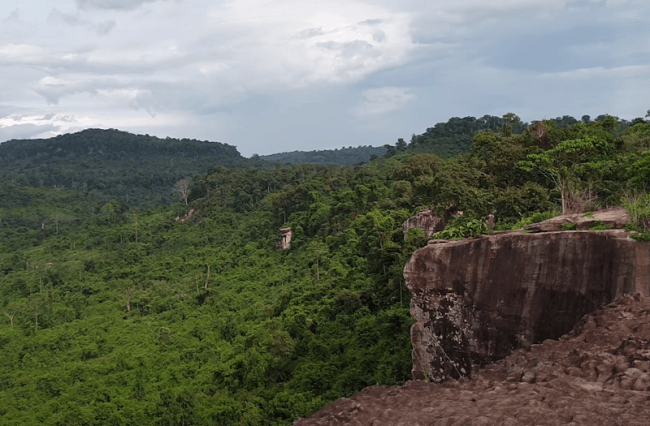
Special features of Angkor Wat
Celestial nymphs
Angkor Wat is famous for having more than 3000 heavenly nymphs, carved into its walls. Each of them is unique, and there are 37 different hairstyles for budding stylists.
The bas-reliefs
Visitors to Angkor Wat are wondering by its imposing grandeur and its fascinating decorative flourishes. it Stretches outside of the central temple complex and is an 800m-long series of intricate and astonishing bas-reliefs carvings for historical events and stories from mythology.
It is found in inscription research that the temple is made in classical Hindu thought- The creation of the universe. The central tower of Angkor is Mount Meru, with its surrounding smaller peaks, bounded in turn by continents (the lower courtyards) and the oceans (the moat). The seven-headed naga (mythical serpent) becomes a symbolic rainbow bridge for humankind to reach the abode of the gods.
Moat (Oceans)
Angkor Wat is surrounded by a 190m-wide moat, which forms a giant rectangle measuring 1.5km x 1.3km. From the west, a sandstone causeway crosses the moat.
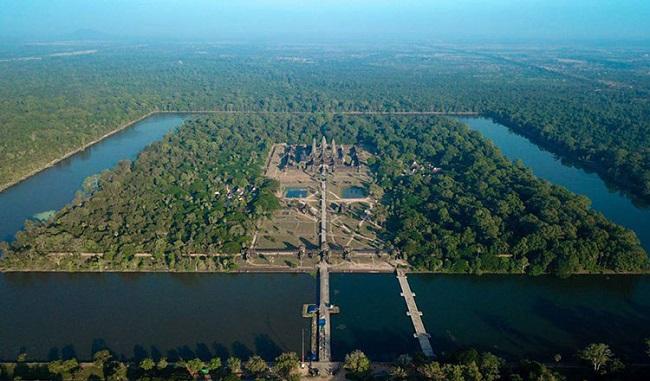
Outer wall
The rectangular outer wall, which measures 1025m by 800m, has a gate on each side, and the main entrance, 235m-wide, richly decorated with carvings and sculptures, is on the western side. There is a statue of Vishnu, 3.25m in height and hewn from a single block of sandstone, located in the right-hand tower. Vishnu’s eight arms hold a mace, a spear, a disc, and a conch.
Avenue
The avenue is 475m long and 9.5m wide and lined with naga balustrades, leading from the main entrance to the central temple, passing between two graceful libraries and two pools. The northern one is a popular spot for watching Sunrise.
Central complex
The central temple complex consists of three stories, each made of laterite. it encloses a square surrounded by intricately interlinked galleries. The Gallery of a Thousand Buddhas used to house hundreds of Buddha images.
owers
The corners of the second and third stories are marked by towers, each topped with symbolic lotus towers. it Rises 31m above the third level and 55m above the ground is the central tower.
Upper level
The stairs to the upper level are very steep because reaching the kingdom of the gods was a tough task. The upper level also known as Bakan Sanctuary is open to a limited number per day with a queuing system.
Also read- The incredible Himalayan destination-Kasol, A mini Israel of India
Best time to visit Angkor wat
Best time to visit Angkor Wat at any time of year, but the peak season is from November to February when the weather is dry and cooler. The best time of day is sunrise when it’s cooler but crowded. Angkor wat is popular at sunset when the temple develops a soft glow in the warm light.
